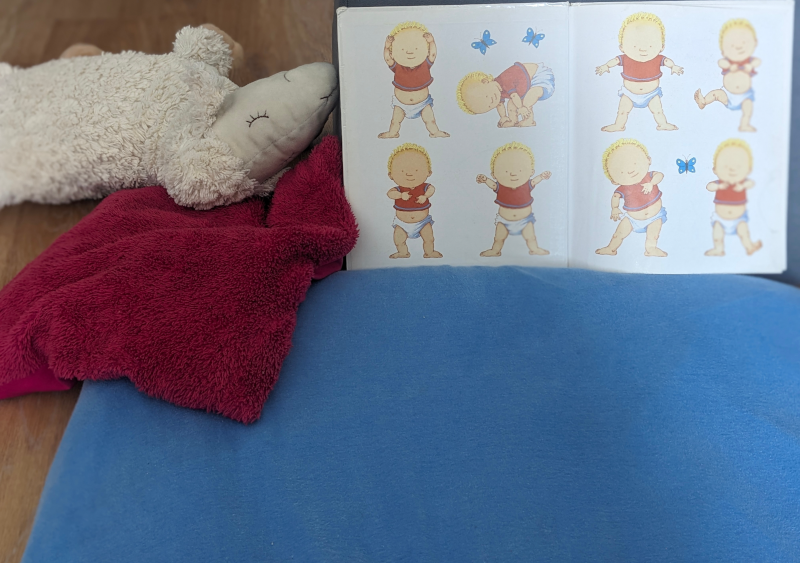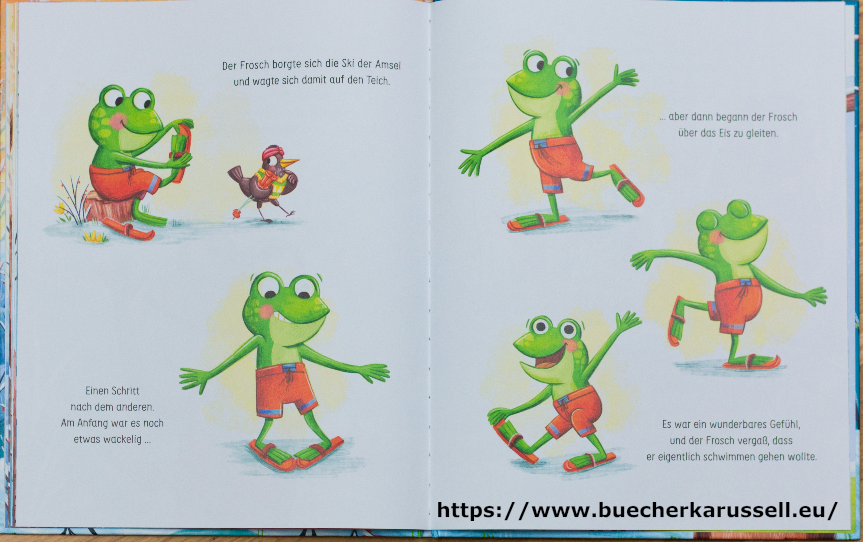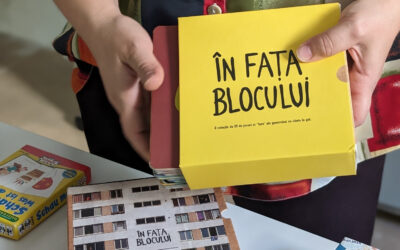Reading Yoga
Reading Yoga
Reading Yoga is a playful, movement-based storytelling session where children bring a story to life through guided physical actions. As they follow the narrative, they act out characters and events with their bodies, supporting vocabulary development, listening skills, and physical coordination in an engaging and interactive way.
Time
30 min
Children 3-8 years olds with parents
Up to 50 Participants
Language skills
A1 to B2
Learn & Gain
Through this activity, children experience language immersion, expanding their vocabulary in a playful and natural setting. The integration of movement and storytelling enhances listening skills and physical coordination, making language learning dynamic and multisensory.
A book with a focus on movements (e.g. “Der kleine Frosch will schwimmen gehen!” by Luisa Schauenber), craft materials if the activity combines with an activity.

Languages Available
1. Introduction to the activity:
- Welcome families and briefly explain the activity’s purpose: to enjoy a story together using movement and imagination.
2. Active reading
- Read the book aloud, pausing after each sentence.
- Invite children to act out the story using body movements (e.g., jumping like a frog, swimming).
- Pause for questions and reflections about the story and characters.
- Encourage parents to join in, especially if children are shy, and model the movements yourself
3. Craft activity (optional):
- Set up a table with craft supplies.
- Children can draw their favorite character doing a yoga pose or invent new movements to illustrate and explain.
- The craft station provides a quiet alternative for children who need a break from movement.

For Educators, Teachers and Parents
In the following section you’ll find additional information to help you adapt this activity for different audiences, language abilities and group sizes. This information should help educators and teachers to adapt the activity to meet the specific needs of different learners and to ensure accessibility, engagement and effectiveness in different learning environments. Optionally, we also give advices to parents how to condct the activity at home.
Adaptation/Application of the method
1. Bilingual/Multilingual Options
- Present key vocabulary, yoga poses, and story actions in both languages and repeat with the group.
- Link new words and phrases to specific movements. Repeatedly practicing these combinations helps children remember vocabulary andassociate meaning with physical action, enhancing long-term retention.
- Use gestures, visual aids, and book illustrations to reinforce meaning and support understanding in both languages.
- Encourage parents to participate and support translation, making the activity more inclusive and culturally relevant for multilingual families.
2. Cultural Contexts
- Select stories that reflect the cultural backgrounds of participants or introduce new cultures in an inclusive way.
- Encourage families to share stories and movements from their own traditions (it can be also dance moves, animals, or particular poses).
3. Other Age Groups
- For younger children: Use shorter stories, more repetition, and simpler movements.
- For older children: Add narrative complexity or invite them to create their own yoga / movement based stories.
4. Distant and online learning
- Host virtual sessions using video conferencing.
- Share video demonstrations or images of movements and while reading.
Challenges
- Shyness or Reluctance: Model participation and invite parents to join in.
- Language Barriers: Use visual aids, gestures, repetition and allow additional language support.
- Varying Attention Spans: Alternate between movement and reading to maintain engagement.
- Space Limitations: Adapt movements to be small and safe for the available area.
Recommendations for teachers
Preparation:
- Choose a book that features clear actions or animal characters for easy movement imitation.
- Prepare a welcoming space with enough room for movement and a separate area for crafts.
- Gather all materials in advance and set up the craft table if using..
Expected output:
- Enhanced language skills (listening, speaking, vocabulary).
- Improved body awareness, coordination, and spatial concepts.
- Increased social interaction and cultural exchange among families.
- Boosted creativity and self-expression.
Language focus:
- Use Repetition
– Repeat key words and phrases from the story, especially those linked to actions (e.g., “jump,” “swim,” “stretch”).
– Encourage children to echo words or sentences after you, reinforcing pronunciation and comprehension.
– Use the same movement with the same word each time to build strong word-action associations. - Pause for Interaction
– After reading a sentence, ask simple questions (“Can you show me how to …?”).
– Give children time to respond verbally and physically, supporting both speaking and listening skills.
- Model and Scaffold Language
– Model clear pronunciation and expressive intonation.
– For new vocabulary, show the movement and say the word together.
Recommendations parents
-
Join the movement! Take part in the storytelling alongside your child. Your enthusiasm will encourage engagement and strengthen the shared learning experience.
-
Repeat the story at home: Read the same book together and act out the movements. Repetition helps to reinforce vocabulary and comprehension of the story.
-
Use gestures to support language learning. Even if your child is new to the language, using simple gestures and movements can help them to associate words with actions and meanings.
-
Talk about the story afterwards. Ask your child what happened in the story, what they liked and how the characters felt. This will help them to recall events and express themselves verbally.
-
Be patient and positive. Every child learns in their own way. Some may jump in enthusiastically, while others may observe quietly at first — both approaches are valuable learning processes.
-
Celebrate the small moments in your child’s language development. Acknowledge when your child repeats a new word, follows a movement or shows interest in a story, as these are all meaningful steps in their learning journey.
References and Resources
Yoga Activities to Increase Literacy Skills:
https://www.pathstoliteracy.org/yoga-activities-increase-literacy-skills/
The book of Luisa Schauenberg: https://www.buecherkarussell.eu/kinder-1/der-kleine-frosch-will-schwimmen-gehen
12 Movement Books for Little Readers: https://everyday-reading.com/movement-books/
Children’s Books for Movement Exploration: https://makemomentsmatter.org/content/books-for-movement-exploration/
Images from the testing workshop © Petronela Bordeianu (Koopkultur e. V.) and https://www.buecherkarussell.eu/
Similar Activities
Ma première histoire
This fun activity for all ages uses storytelling and a simple card game to help children develop language skills, creativity, and self-confidence by reading, identifying story elements, and creating their own stories
My First Story English Only
This fun activity for all ages uses storytelling and a simple card game to help children develop language skills, creativity, and self-confidence by reading, identifying story elements, and creating their own stories


